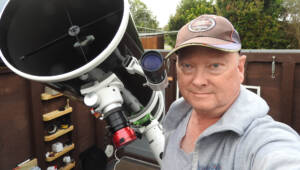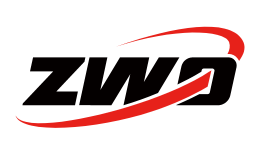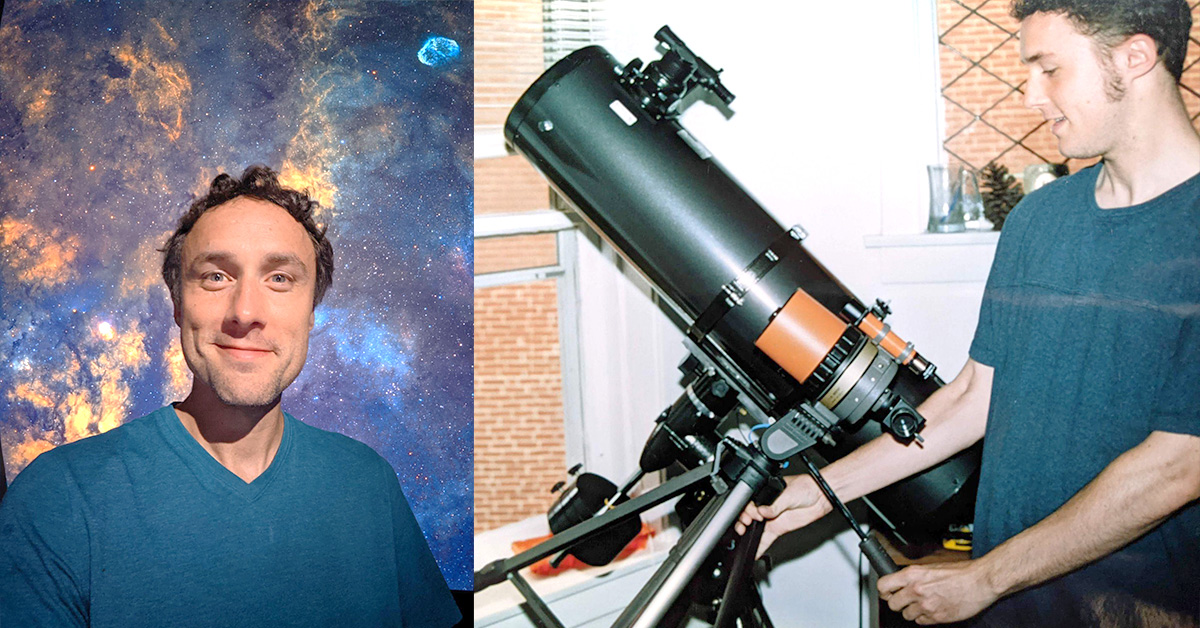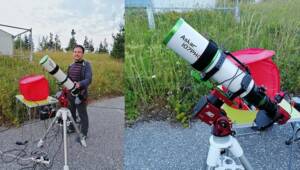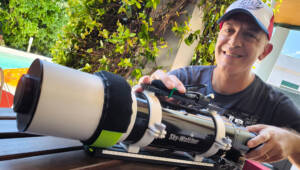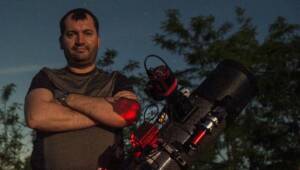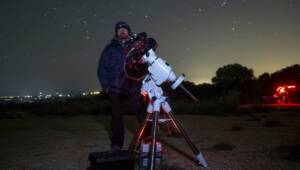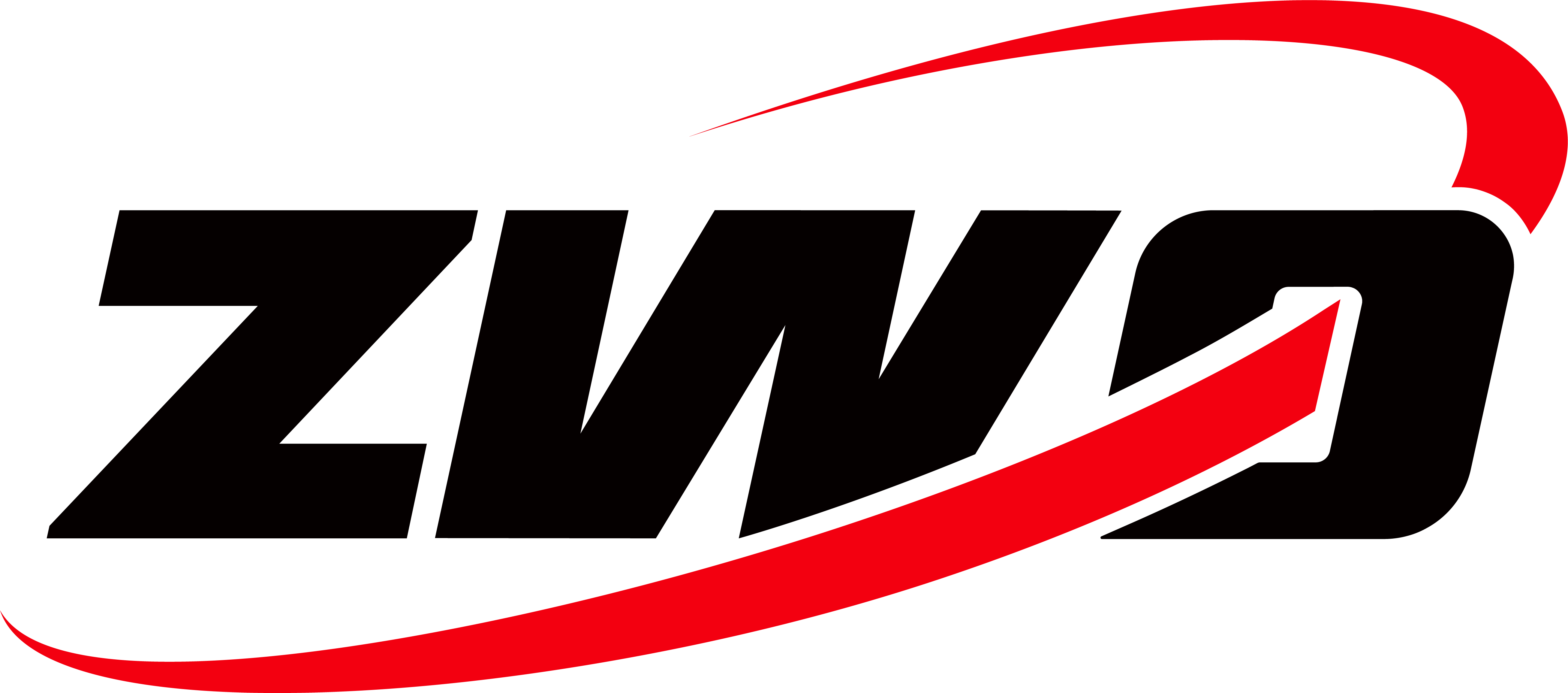Q1: At first, congratulation that your nice image won #ASIWEEK. Can you introduce yourself to us?
Thanks very much, I was very excited to have my image chosen! My name is Nick Lake, and I am an amateur astrophotographer and lifelong space enthusiast living in the city of Chicago with my wife and two young kids. I recently started a YouTube channel about astrophotography, and I am also an opera enthusiast.

Image: selfie in the Grainger Sky Theater at Adler Planetarium, with my 4-panel SHO mosaic of the Sadr region
Q2: Why do you love astronomy? What does it mean to you?
Astronomy for me has always been about seeing things for myself. Whether it is knowing where to find Venus after sunset or star-hopping to M101 in the eyepiece or seeing the OIII data roll in on the Eastern Veil, I love being able to apply my knowledge and experience to find and see and image more and more amazing things.

Image: M31 in HaRGB. 1.5 hours H-alpha acquired in Chicago. 3 hours RGB acquired in Bortle 4 skies. RASA 8, ASI1600MM Pro
Q3: When did you start astrophotography? What was your feeling when you first saw the image showing on the screen?
I started astrophotography back in 2004 on film. I was still in college and didn’t have a lot of time or resources to pursue it fully, but getting those prints back from the camera shop (oh the anticipation!) and seeing the stars and clusters I had captured was really amazing. It opened up a whole new way of experiencing the sky: being able to capture more than what my eyes could see through the telescope. I eventually moved into DSLR astrophotography and those moments of seeing an image come up on the back of the camera were truly unforgettable. These days I mainly image in mono, so it isn’t quite the same impact when the image comes up on my smartphone through the ASIAIR, but it is still incredible, and my images are better than ever.

Image: me with my Celestron C90 Mak-Cass and Orion SkyView Pro 8” Reflector in 2004.
Q4: What gear do you use for astrophotography? Any pictures of them?
My primary setup includes a Celestron RASA 8 on an iOptron CEM40 mount. I image with an ASI1600MM Pro connected to an ASIAIR Plus and a ZWO EAF. I have a 60mm Orion guidescope and an ASI290MM Mini guide camera. I generally shoot narrowband as I am in Bortle 9 skies most of the time, and my go-to filters are 2” Baader 3.5/4nm f/2 filters.
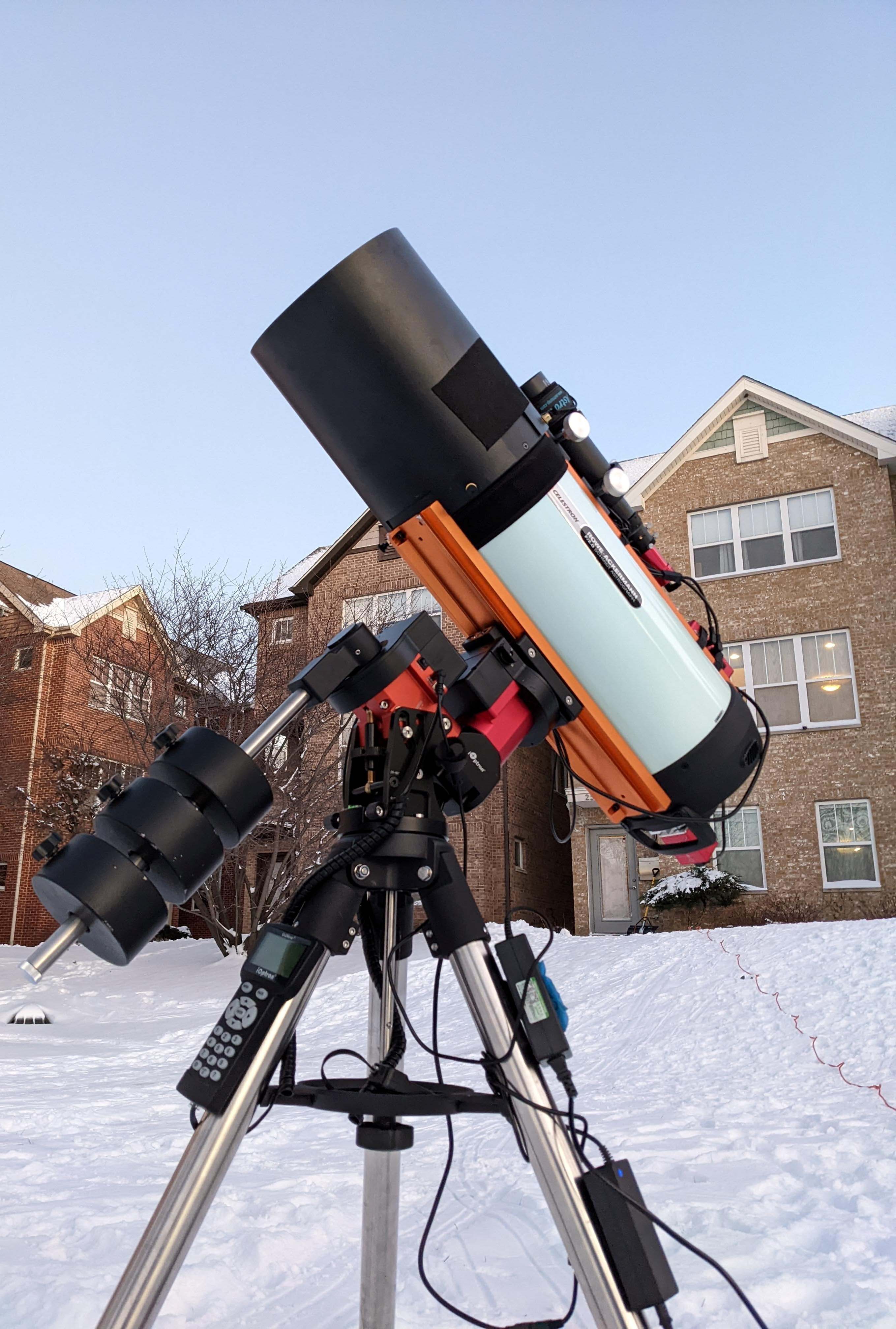
Q5: Your ASIWEEK image “Rosette Nebula” was outstanding! How did you capture it?
Thank you! I took advantage of the speed of the RASA to complete an image in the very few clear December nights we get in Chicago. I was able to capture the data in two nights, with one night dedicated to H-alpha and the other night with all three narrowband filters. I was very selective with the subframes, especially the H-alpha. Using SubframeSelector in Pixinsight, I only accepted the subs with the best FWHM and Eccentricity, and selected those with the highest star counts. This allowed me to have a very crisp and clean integrated H-alpha channel, which I used as a Luminance layer over the standard SHO channel combination. This made up for somewhat limited SII and OIII integration times (only an hour each!) to allow that color data to shine through and not worry too much about the noise.

Q6: What do you think is the most difficult part of DSO imaging?
Probably having patience. It extends to everything, from planning a rig and purchasing equipment, to setting up your rig at night, to capturing enough data, to waiting out long spells of cloudy (or clear but windy) nights, to processing and eventually to posting and sharing your final image. It’s so easy to rush ahead at any of those points and try to take shortcuts that will almost always come back to bite you in the end. It’s really tempting to try to get it all done in one night, especially if you haven’t had a good night in a while, but it’s almost always better to slow down and capture the data you need for the best image you can get, rather than settling for just okay.

Image: California Nebula in SHO. 4.5 hours integration. RASA 8, ASI1600MM Pro, Baader f/2 Ultra-narrowband filters
Q7: Would you mind introducing your YouTube Channel “Windy City Astrophotography” to us?
Yes, I was very excited to start my YouTube channel back in September of 2021. I focus mainly on astrophotography from light-polluted skies, as we have here in Chicago. I show what is possible with the right equipment and a little know-how even from bright skies where you can barely see stars with your naked eye. I spent so long consuming amazing YouTube content from astrophotographers that I felt it was time to give back and hopefully help inspire newcomers to the hobby to see what they’re able to capture no matter where they live. It has been a blast so far. I just passed 1000 subscribers and have met and connected with so many amazing astrophotographers, some of whose work I have admired for years.

Image: Heart Nebula 2-panel Mosaic, SHO. 4 hours H-alpha, 1.5 hours OIII, 1.5 hours S2 per panel. RASA 8, ASI1600MM Pro, Baader f/2 Ultra-narrowband filters
Q8: Do you have any unforgettable experience during these years of astrophotography?
Funnily enough, the ones that stick out most are the shortest: capturing the ISS while hand-guiding my scope and also during lunar or solar transits. It’s so quick and so much planning has gone into it (especially for the transits) that it really gets my heart racing every time.

Image: Canon EOS SL1 at prime focus on Orion 8” f/4.9 reflector
Q9: Apart from taking astrophotos, do you participate in other astronomy-related events?
I am lucky to be able to be a space nerd in my spare time and also get paid for it. I work at the Adler Planetarium in Chicago in the Theaters department. I oversee our live planetarium presentations and help create our fulldome experiences that bring the wonders of the universe to our guests.

Q10: If you are asked to give some advice for the newcomers, what do you want to say?
Take time to get to know the sky as you learn astrophotography. It’s really incredible to be able to search for an object and slew to it immediately, but make sure you’re familiar with the sky and the different seasonal constellations from an observing perspective too. Getting to appreciate the sky and knowing its motions and phases can really help in planning your astrophotography sessions, and getting out there and reading a star chart and maybe star-hopping to a deep sky object in the eyepiece of a telescope can be tremendously rewarding. In the warmer months I often will have my imaging setup up and running and then bring out my optical scope to do some observing at the same time. It not only helps you be more familiar with the sky, but it also highlights just how incredible this imaging technology is that allows you to automatically point to, track and image objects that might be barely visible or invisible in the eyepiece.

Image: 4-panel SHO mosaic of Sadr Region. 1 hour H-alpha, 30 minutes OIII and S2 per panel. RASA 8, ASI1600MM Pro, Baader f/2 Ultra-narrowband filters
Q11: Does your family join you when you take the astrophotos?
Sometimes! When the sunset is early enough, I’ll often get set up early and then during bedtime for my young kids we’ll slew around the sky a bit and take some images of the moon or deep sky objects.

Image: Lagoon and Trifid Nebulae. 75 minutes integration through Baader RGB filters. RASA 8, ASI1600MM Pro
Q12: How do you like your camera ASI1600MM Pro?
I love it. It pairs extremely well with the RASA, and the image quality is outstanding. It isn’t the newest or fanciest, but it absolutely holds its own, and I’ll be using it for a long time to come.

Image: Cygnus Wall, 2.5 hours SHO integration. RASA 8, ASI1600MM Pro, Baader f/2 Ultra-narrowband filters
Q13: What achievement have you made on astrophotography during 2021? What goal do you have for 2022?
2021 was when I finally got my ideal urban astrophotography rig assembled, including scope, mount, camera and filters. It was extremely satisfying to see it all come together and work out the kinks and figure out some best practices. 2022 is all about starting to push the boundaries and see just what it is capable of now that all the pieces are in place.

Image: Witch Head Nebula. 3 hours total through Baader RGB filters. RASA 8, ASI1600MM Pro
Q14: What’s your impression of ZWO? Do you have any suggestions or feedback to us?
I’ve been really impressed with ZWO’s social media presence and ability to engage with their user base. Things like the ASIWEEK contest and multiple pages for different products help bring together all types of users and also bring them closer to company representatives and developers who can answer questions or take feedback. The cadence of new version releases for the ASIAIR is really impressive, and while not every feature request can be fulfilled, I think the number that is and the speed with which that happens is great!

Image: Wizard Nebula. 10 hours SHO integration with RGB stars. RASA 8, ASI1600MM Pro, Baader f/2 Ultra-narrowband filters and RGB filters
